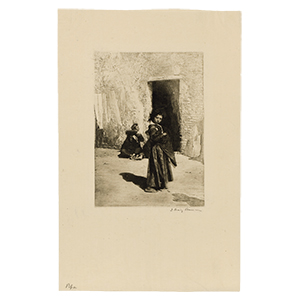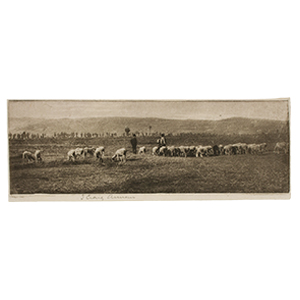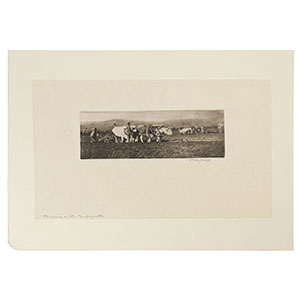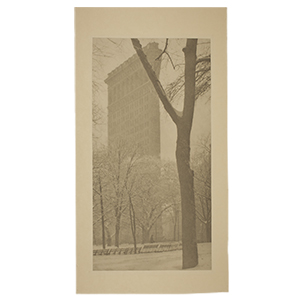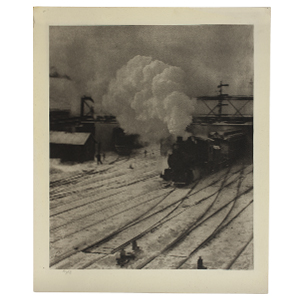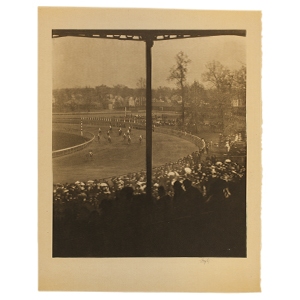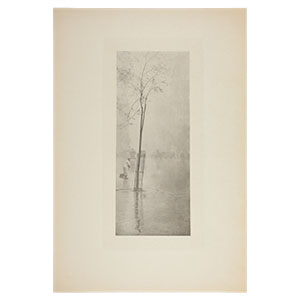Processes > Photogravure
Photogravure
1850s–present
The earliest method of reproducing photographs in ink, photogravures peaked in popularity at the turn of the 20th century. The production of a photogravure required a negative the size of the desired print, which was used to expose a sheet of gelatin-coated paper or tissue. This was transferred to a copper plate and acted as a resist material while the plate was washed in acid baths of various strengths, eating away at the metal’s exposed portions. As with an etching, the clean etched plate was then inked and printed on paper. Offering rich midtones and soft blacks, the photogravure was prized by many members of the Photo-Secession and was the preferred medium for the images Stieglitz included in Camera Work.
n



